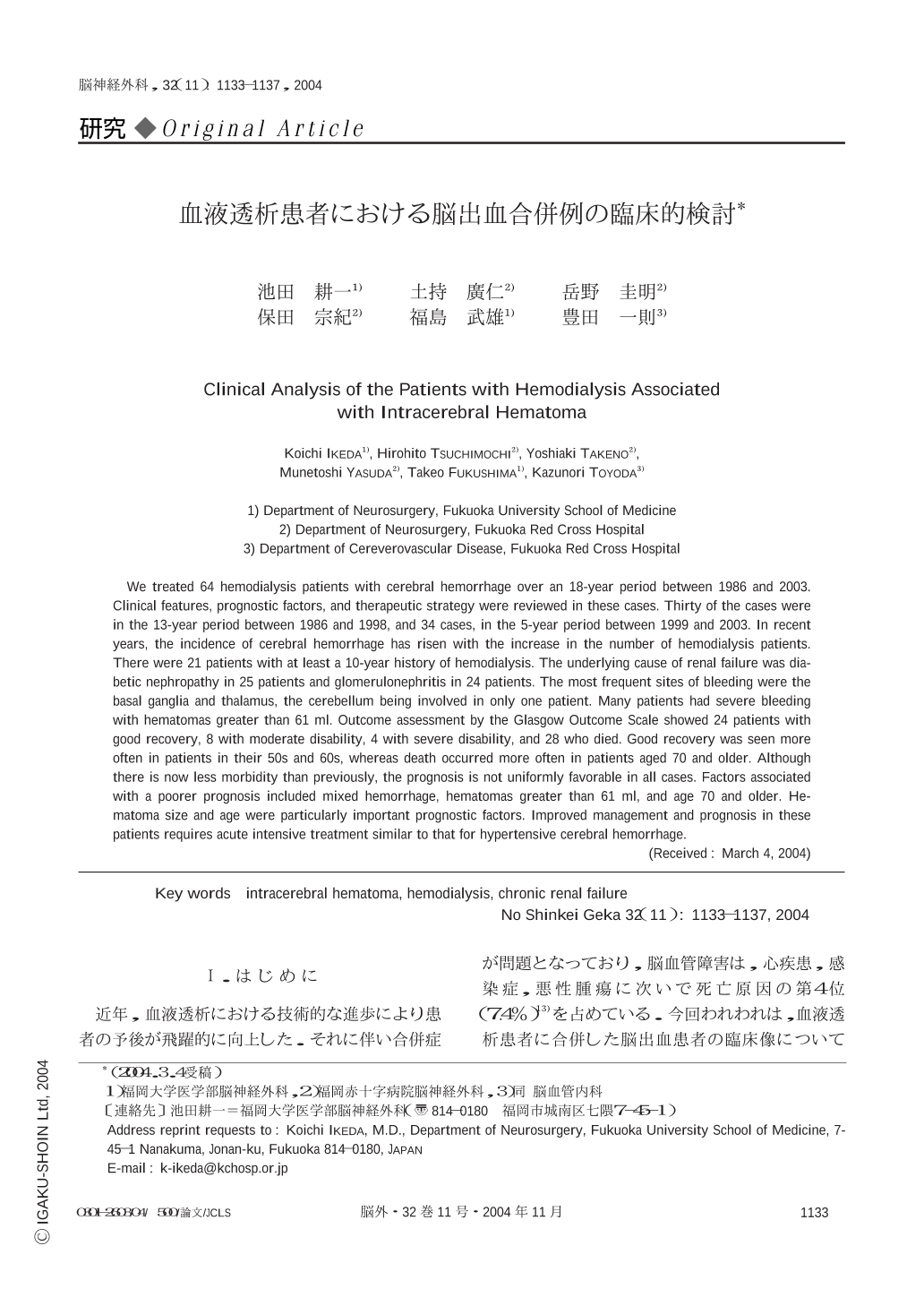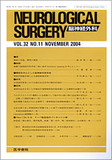Japanese
English
- 有料閲覧
- Abstract 文献概要
- 1ページ目 Look Inside
Ⅰ.はじめに
近年,血液透析における技術的な進歩により患者の予後が飛躍的に向上した.それに伴い合併症が問題となっており,脳血管障害は,心疾患,感染症,悪性腫瘍に次いで死亡原因の第4位(7.4%)13)を占めている.今回われわれは,血液透析患者に合併した脳出血患者の臨床像についてretrospectiveに解析し,予後因子および治療方針について検討した.
We treated 64 hemodialysis patients with cerebral hemorrhage over an 18-year period between 1986 and 2003. Clinical features,prognostic factors,and therapeutic strategy were reviewed in these cases. Thirty of the cases were in the 13-year period between 1986 and 1998,and 34 cases,in the 5-year period between 1999 and 2003. In recent years,the incidence of cerebral hemorrhage has risen with the increase in the number of hemodialysis patients. There were 21 patients with at least a 10-year history of hemodialysis. The underlying cause of renal failure was diabetic nephropathy in 25 patients and glomerulonephritis in 24 patients. The most frequent sites of bleeding were the basal ganglia and thalamus,the cerebellum being involved in only one patient. Many patients had severe bleeding with hematomas greater than 61 ml. Outcome assessment by the Glasgow Outcome Scale showed 24 patients with good recovery,8 with moderate disability,4 with severe disability,and 28 who died. Good recovery was seen more often in patients in their 50s and 60s,whereas death occurred more often in patients aged 70 and older. Although there is now less morbidity than previously,the prognosis is not uniformly favorable in all cases. Factors associated with a poorer prognosis included mixed hemorrhage,hematomas greater than 61 ml,and age 70 and older. Hematoma size and age were particularly important prognostic factors. Improved management and prognosis in these patients requires acute intensive treatment similar to that for hypertensive cerebral hemorrhage.

Copyright © 2004, Igaku-Shoin Ltd. All rights reserved.


